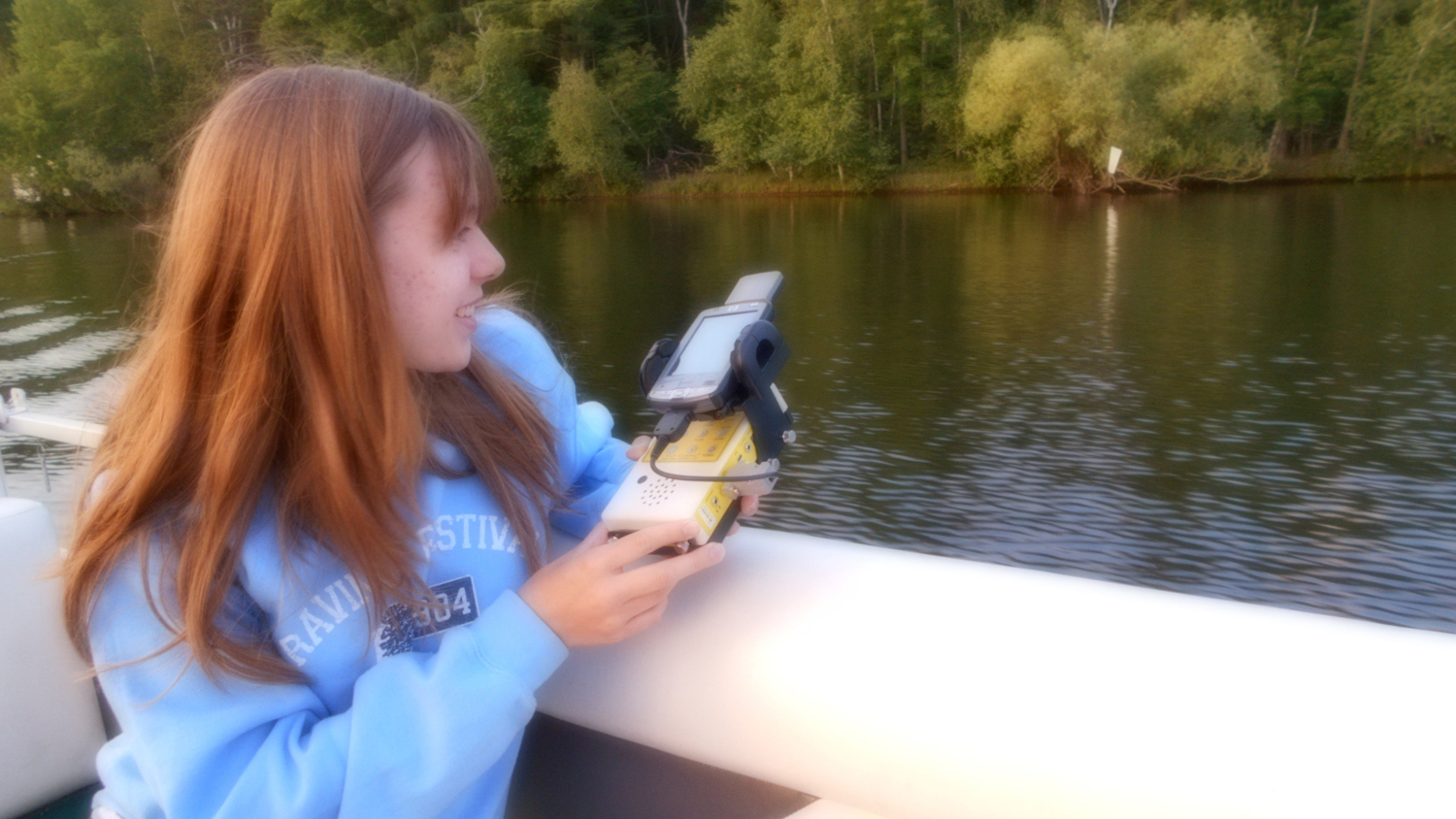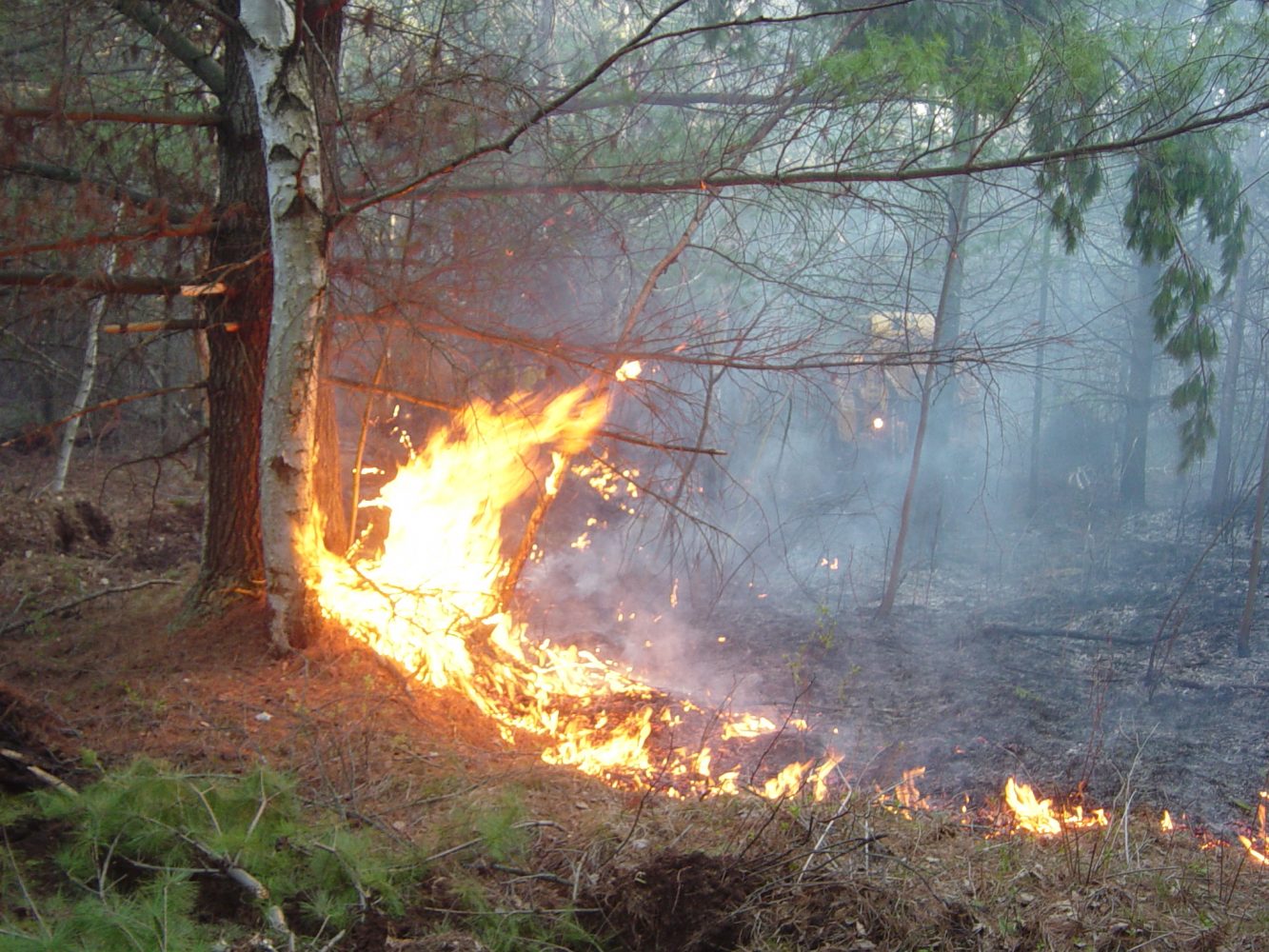Transforming a sunset boat ride into a scientific survey

Story and photo by Sue Schneider
Most people appreciate bats, especially once they discover how many pesky mosquitoes they consume on any given night. But Joel Knutson of Rhinelander has developed a true fascination with the winged animals and would like others to join him monitoring bats on Northwoods lakes.
“It was at a Trees for Tomorrow session in Eagle River that I first learned about the Wisconsin Bat Program,” he explains. “Citizen-scientists have been at work for years now recording bats in Wisconsin. It’s an important tool used to measure their populations, habitat loss and migration routes.
“We are trying to cover area lakes, which is a very pleasant and simple task,” he says. “You don’t need a notebook or special clothing. In fact, you can hold the monitor in one hand and a martini in the other, as long as you have somebody else piloting the boat along the lake shore.”
As a member of the Town of Crescent Board and its very active Lakes Committee, Joel became involved with several projects including loon surveys and aquatic invasive species (AIS) monitoring. When he took on his new job as Oneida County’s University of Wisconsin Extension community, natural resource and economic development agent, he had even more opportunity to interact with area organizations.
“Lake associations have done a great job with AIS and loons over the years,” says Joel. “They’re experiencing some burn-out, though, and looking for something different. This bat monitoring is a great additional project. It clearly demonstrates connections in a positive way.”
Joel is aided in his efforts by his girlfriend, Rosie Page, a biologist who also took the seminar on bat monitoring. “We know of seven or eight different species of bats in the area, and each has its own sound frequency,” she says. “It’s like bird calls. If you know how to listen, you can learn about the habitat preferences of the different species.”
Originally from Ontario, Canada, Rosie specializes in long-term study of natural resources. She is currently working on terrestrial invasive species in Oneida and Vilas counties and among her tasks is helping volunteers pull invasive garlic mustard from area forests.
“We know that about half of the species found here are roosting bats, which spend their days hanging from branches in the forest canopy and migrate south in the fall,” says Rosie. “The others are cave-dwelling bats that rest in hollows in trees and seek caves for the winter.”
New technology
The Anabat machine is a small but complex computerized device that picks up the high-frequency sounds emitted by any bats between 75 and 100 feet away and records them, as well as exact time and location using a GPS component.
Contrary to popular belief, bats are not blind, but they utilize their acute sense of hearing to hunt in the dark night skies. While flying, they emit sounds that then bounce off objects back to the bat, which uses echo-location to identify and capture food and avoid obstacles.
Humans cannot hear bats, and since they come out after sundown, often cannot see them, either, although Joel says his eyes have gotten sharper. “The Anabat will amplify the bat calls,” he says. “I’m just starting to learn what they mean. The experts will take these recordings and analyze the data. They can tell just from the sounds what species and age the bat is and what it’s up to: feeding, breeding or roosting.”
On a recent summer evening, Joel and Rosie took a group of folks out on Crescent Lake with the Anabat device. While cruising along the shoreline, it became apparent which areas the bats prefer. While passing tree lined shoreland, the device emitted quick, light blips of sound, evidence that bats were feasting on mosquitoes. In areas where property owners had cut trees, the Anabat was silent.
“This, more than any other survey will demonstrate the direct effect of a healthy shoreline,” says Joel. “You get immediate feedback. Lake living offers property owners the power of a micro-level impact on the ecology of the lake.
“What we do really matters,” he says. “If you want those mosquito-eating bats at your house, you need to have good trees and a healthy shoreline. Cut those trees down and the bats will skip you and go over to your neighbor’s place.”
Joel hopes to get more people interested in surveying their own lake for bats. “We have a list of area lakes where we want to do ongoing study,” he says, “but there is no lake we don’t want to know about. Just give me a call, and we’ll set it up.”
The main problem holding things up is the scarcity of the Anabat monitors. At almost $3,000 each, the machines are currently on a wait list. The good news is, Joel was able to obtain one for use in Oneida County with funding from a WDNR citizen science grant and aid from the local Lumberjack RC&D council.
“We also want to get some passive machines to set up at local schools,” says Joel. “Kids seem to have a natural curiosity about bats and haven’t developed the fear that some adults have of them. I will also be setting up some opportunities to do programs with kids and help them build bat houses.”
Bats in your belfry?
Besides studying bats in the wild, Joel offers help to residents who want to keep bats out of houses or outbuildings. “I’ve spent a lot of time searching houses for possible bat entry points by chimney vents and soffits,” he explains. “Most of the time it turns out that they’ve swooped into an open doorway chasing insects. Even a small crack at the top of a door will let them in. “They don’t want to be there anymore than we want them,” he says. “Their first instinct is to fly around in circles, sending out signals trying to figure out where they are and how to get out. That scares people. The best thing to do is to kind of have a dance-off; make yourself big by raising your hands and directing the bat toward an open window.
“If you’ve got a few bats together in an attic or something, chances are there may be pups,” Joel continues. “In that case, we’ll call in professionals to make sure the bats can safely be moved.”
Although bats may carry rabies, fear of bats and random attacks on humans is largely unwarranted. “Rabies in bats is rare, and transmission to humans rarer still, just one or two cases nationwide a year in spite of millions of bats,” says Joel. “But just like any other mammals in Wisconsin, you want to exercise caution. It is safer for both us and bats to avoid handling.”
Rosie points out that wood ticks offer more danger to humans than bats. “Bats actually cut down on mosquito-borne illness,” she says, adding that attracting bats to neighborhoods by providing good outdoor habitat does not necessarily put people at higher risk of actual contact.
The recent emergence of white-nose syndrome, a fungal infection, has already killed more than 6 million bats of the cave-dwelling varieties, and has biologists very worried. Studies such as these, aided by Joel and others, will help scientists learn more about how best to help bats survive.
“Bats have a lot invested in everything they do,” says Rosie. “Every movement, everything has to be balanced. Females give birth to just one pup each year, so their populations are very sensitive.”
Joel points out that individual bats that make it beyond the crucial first two years of life can live to the ripe old age of 15 to 20 years. Dangers include not only habitat loss, but predators like owls and eagles. “They are tough little mammals,” he says. “They are not rodents, as many believe. With sharp claws and teeth, they can defend themselves, but there’s so much we can do to make sure they remain an important part of our Northwoods ecosystem for many years to come.”
Joel welcomes opportunities to present programs and demonstrate monitoring for lake associations or individuals, and to help residents who want to keep bats out of their homes or outbuildings. He can be contacted at (715) 365-2759 or by email at [email protected]. More on the Wisconsin Bat Program can be found at http://wiatri.net/inventory/bats/.
Sue Schneider lives in Rhinelander. Her articles also appear in Northwoods Commerce and Northwoods ‘boomers and Beyond magazines.
Leave a reply
You must be logged in to post a comment.





